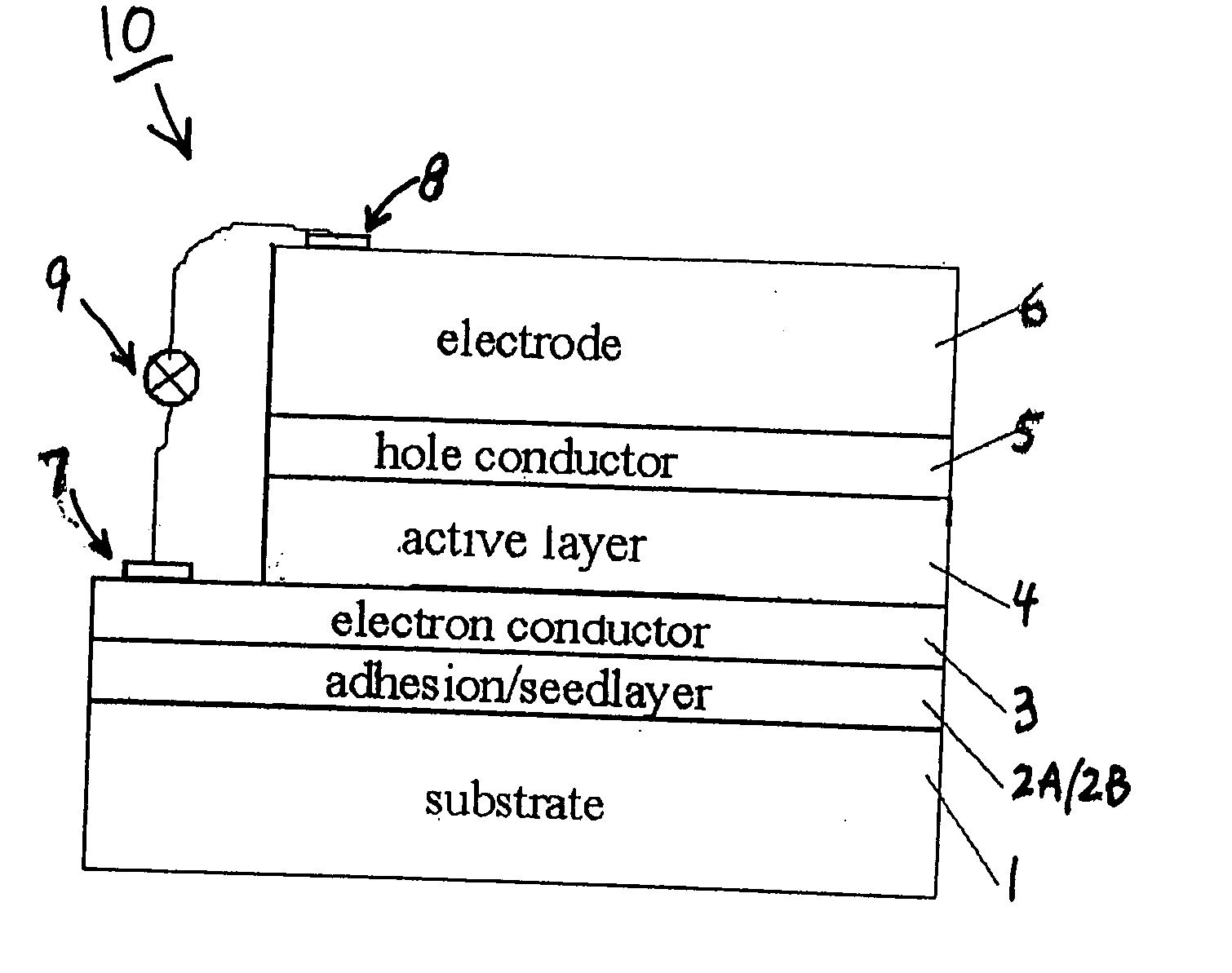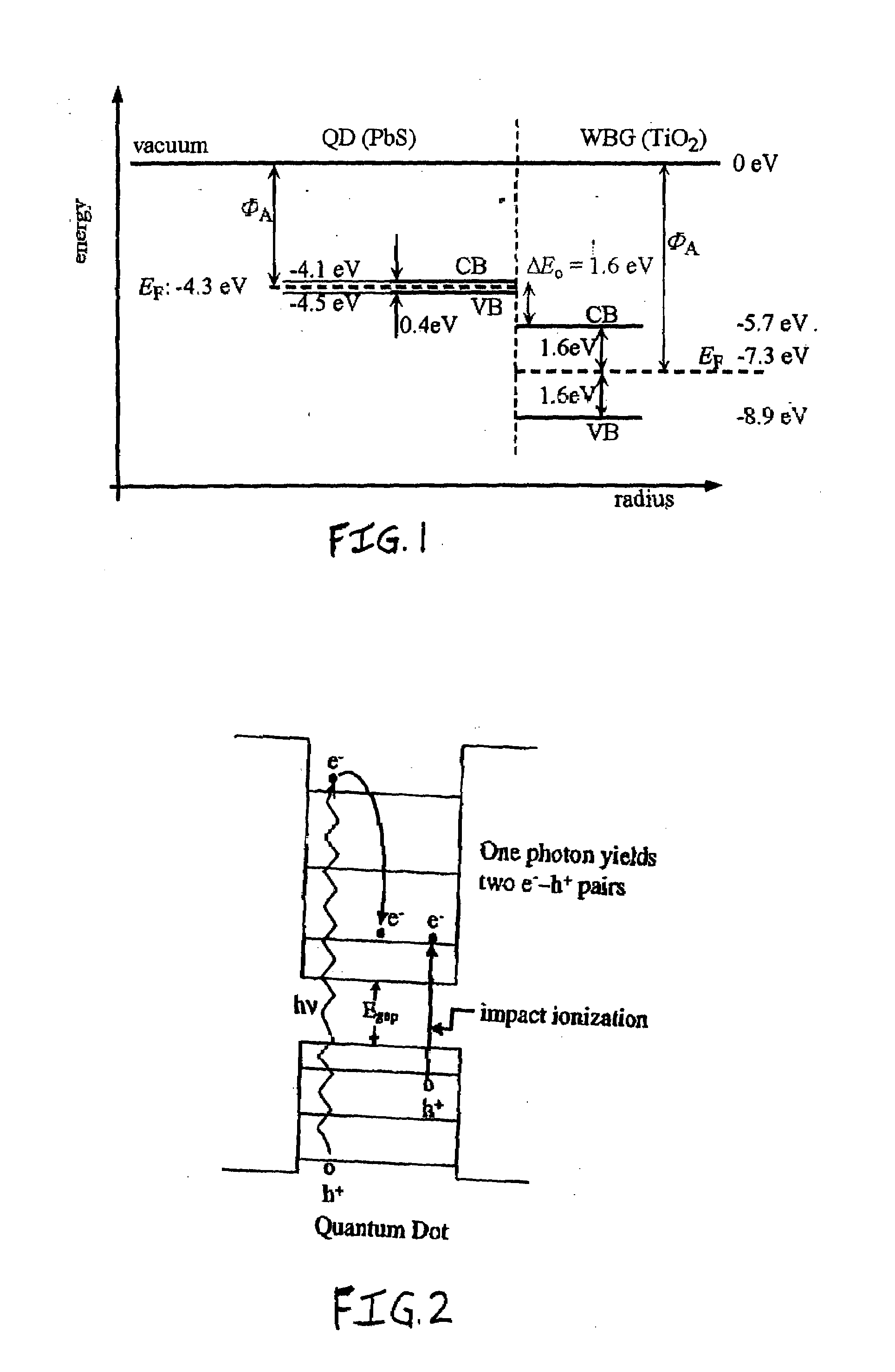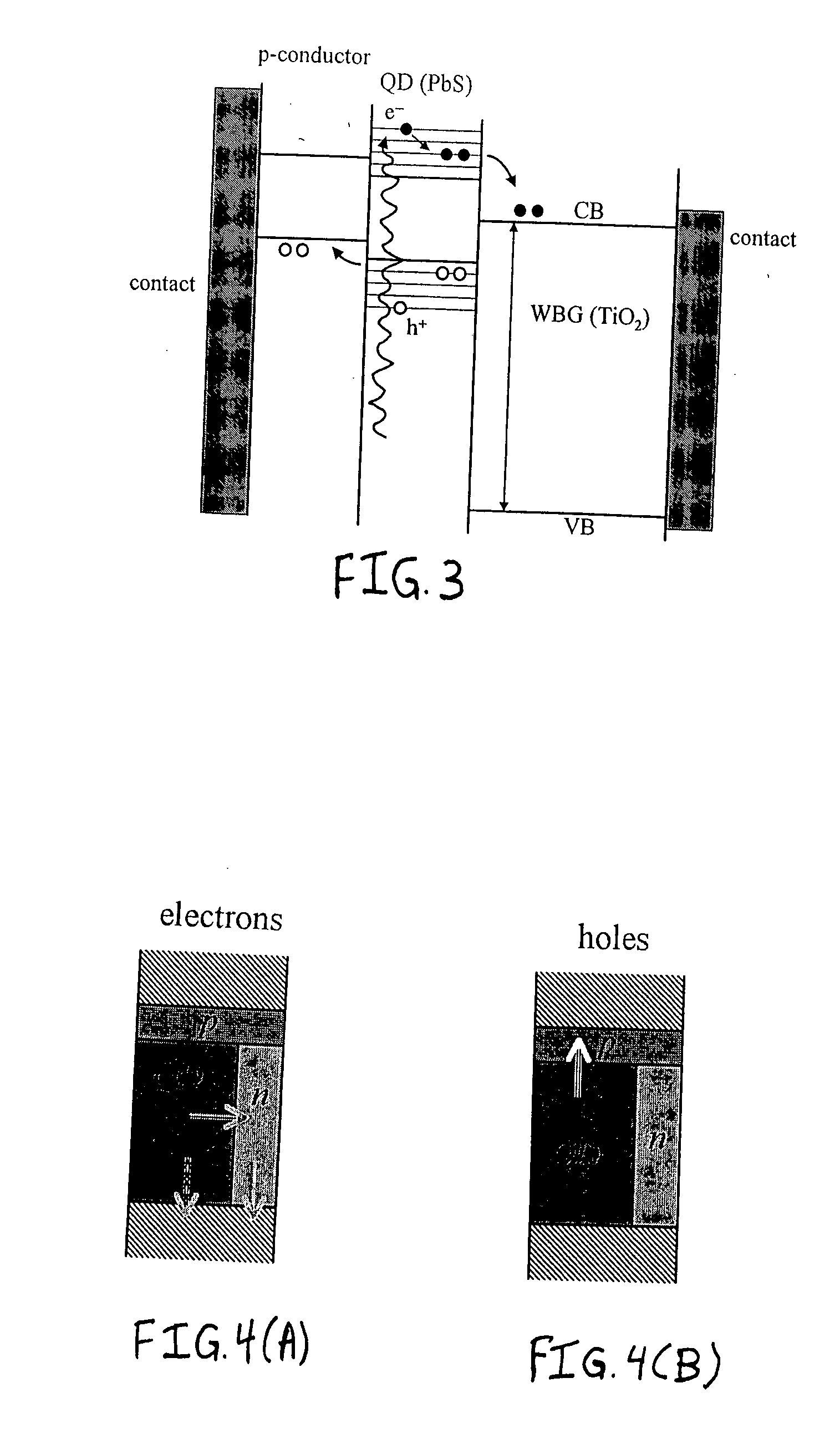Quantum dot sensitized wide bandgap semiconductor photovoltaic devices & methods of fabricating same
a wide bandgap, quantum dot technology, applied in semiconductor/solid-state device manufacturing, semiconductor devices, electrical equipment, etc., can solve the problem of reducing the efficiency of solar conversion of such devices to 10%, reducing the qd content of semiconductor heterojunction photovoltaic devices, and reducing the qd content of semiconductor heterojunction devices.
- Summary
- Abstract
- Description
- Claims
- Application Information
AI Technical Summary
Benefits of technology
Problems solved by technology
Method used
Image
Examples
Embodiment Construction
[0075]The present invention is based upon recognition that solid-state heterojunction QD-sensitized PV cells can be fabricated with substantially improved viability when used as solar energy-to-electrical energy conversion devices than heretofore possible via conventional methodologies, including absorption of the QD material from colloidal solution and in situ processing. According to the present invention, the active photovoltaic layer of solid-state heterojunction QD-sensitized PV cells is a novel granular film structure comprising a columnar-shaped, 2-dimensional matrix including a substantially greater volume (hence amount) of QD material, relative to WBG material, than heretofore afforded by the aforementioned conventional methodologies, such as absorption of QD material from solution and in situ processing.
[0076]More specifically, according to the present invention, a substrate (preferably transparent) with an electrically conductive granular layer thereon (e.g., transparent ...
PUM
 Login to View More
Login to View More Abstract
Description
Claims
Application Information
 Login to View More
Login to View More - R&D
- Intellectual Property
- Life Sciences
- Materials
- Tech Scout
- Unparalleled Data Quality
- Higher Quality Content
- 60% Fewer Hallucinations
Browse by: Latest US Patents, China's latest patents, Technical Efficacy Thesaurus, Application Domain, Technology Topic, Popular Technical Reports.
© 2025 PatSnap. All rights reserved.Legal|Privacy policy|Modern Slavery Act Transparency Statement|Sitemap|About US| Contact US: help@patsnap.com



